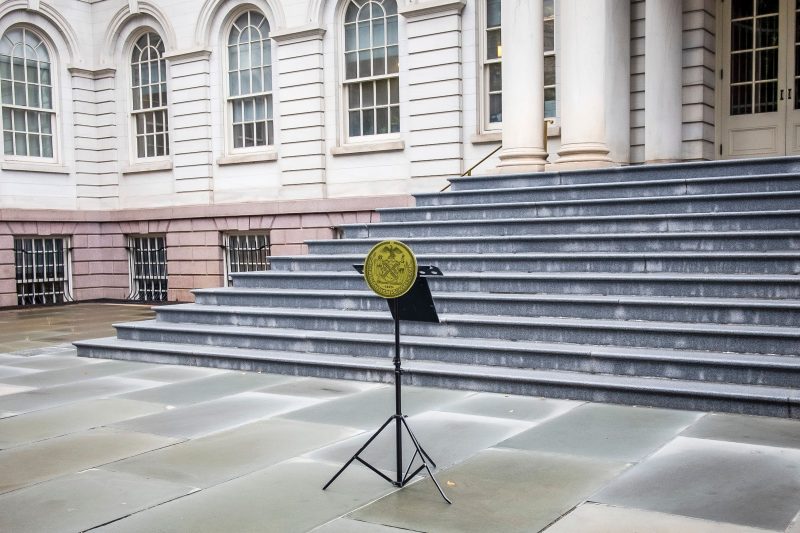
It is, in fact, not so easy to find a good New York City mayor
Even for New Yorkers, it’s hard to appreciate the scale of New York City.
The most recent Census Bureau estimates put the population at just over 8.8 million. That means that 1 out of every 38 U.S. residents lives in New York City. That’s just the city, mind you, the five counties that constitute its five boroughs. The metropolitan area is obviously much bigger.
That 8.8 million population, though, means that if New York City were its own country, it would be the world’s 103rd largest, just behind Switzerland and ahead of about 130 others. New York City has more people living in it than Laos, Turkmenistan, Hong Kong, Libya, Kyrgyzstan, Paraguay, Nicaragua, Bulgaria, Serbia, El Salvador, Congo, Denmark, Singapore, Lebanon, Finland, Liberia or Norway.
If it were its own state, it would rank 12th, just ahead of Virginia. There are more residents of New York than there are of Washington, Arizona, Tennessee, Massachusetts, Indiana, Missouri or Maryland.
New York City’s government, meanwhile, employs more than 330,000 people. There are only two states that have more employees in their state government than that, according to the Bureau of Labor Statistics: California and Texas. New York City employs more government workers than there are working for New York state. New York City has more employees in its government than the states of Nevada, Delaware, Idaho, Montana, Maine, Alaska, New Hampshire, North Dakota, Rhode Island, Vermont, South Dakota and Wyoming do combined.
And the person in charge of all of those employees, of leading that city of 8.8 million people is Mayor Eric Adams. At least as of this writing.
As you have no doubt heard, federal prosecutors unveiled a hefty, multi-count indictment against Adams on Thursday, charging the mayor with bribery and wire fraud, among other things. The indictment — obviously still unproven — offers a surfeit of allegations of Adams’s alleged corruption, trading his position for monetary gifts and campaign contributions.
The indictment did not come as a surprise — in part because so many officials working with Adams had already been rolled up in some sort of investigation. It didn’t come as a surprise, too, because Adams’s behavior while in office had already raised so many eyebrows. He leaned into his reputation of brashness and self-confidence, even as reporters pointed out that various claims he made (like about where he lived) often didn’t add up.
The Adams indictment was made public at about the same time as another development involving one of Adams’s predecessors: former mayor Rudy Giuliani.
Giuliani’s once-impressive reputation was obliterated by his efforts on behalf of former president Donald Trump, from his embrace of misinformation presented by people linked to Russian intelligence to his ceaseless promotion of false claims about the results of the 2020 election. On Thursday morning, the D.C. Court of Appeals upheld Giuliani’s disbarment for that latter effort. Giuliani still faces criminal charges related to the effort to overturn Joe Biden’s victory in multiple states.
The city has had two other mayors this century. The first — and arguably most successful — was Mike Bloomberg, who succeeded Giuliani. His tenure was less dramatic than Giuliani’s or Adams’s, certainly, though his effort to parlay the position into a presidential bid in 2020 was unsuccessful. The other was Bloomberg’s successor, Bill de Blasio, who was the subject of lots of mockery and derision but no federal indictments. His effort to parlay the position into a presidential bid in 2020 was also unsuccessful.
One of the challenges to serving as mayor of New York is, again, scale. You are stepping into a job that requires administration of a geographic area one-half of 1 percent the size of Arizona but with nearly 20 percent more people. A geographic area that extends more than 1,700 feet above sea level in some places and hundreds of feet underground. That one of Adams’s signature achievements was the introduction of closed garbage cans for trash pickup is a testament to the difficulty of managing the metropolis. Bloomberg’s relative success was probably in part due to his experience managing the large private company that bears his name.
Another challenge is that the political system in New York City is old and ugly, messy and riddled with corruption. The city is so big and so densely populated that politicians can and do carve out little fiefdoms, places where they curry favor and from which they promise to deliver votes. The media market is expensive, making it appealing for a citywide candidate to pay a few hundred dollars to someone who can convincingly promise to turn out people in a certain area.
Traditional turnout efforts, for example, are stymied by apartment buildings with exterior doors that keep out any nonresidents. If you can convince a candidate that you can get inside and talk to those voters, you can probably get some cash to do it.
There are lots of niches where money can get stuck. Advance within the system, and it’s understandable that you would become accustomed to this being the way things work. And Adams very much advanced within the system.
Adams is innocent until proven guilty. Should he be proven guilty or admit to some degree of culpability, it simply bolsters the point: Running the city of New York is a difficult task even when undertaken with the best intentions. And the city’s system of governance often makes it easy for the worst intentions to breed.
